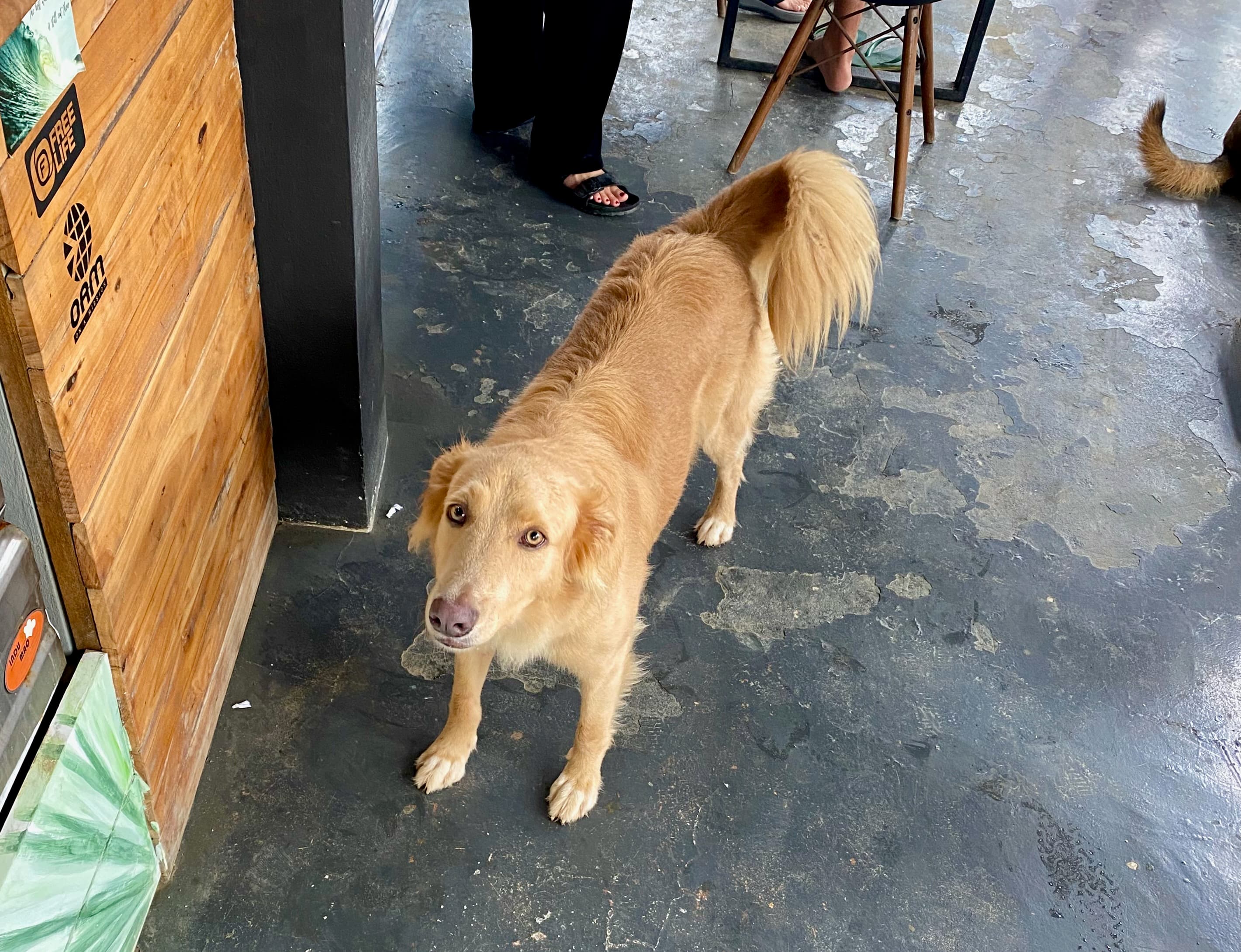Travel Diary 2: Ayampe
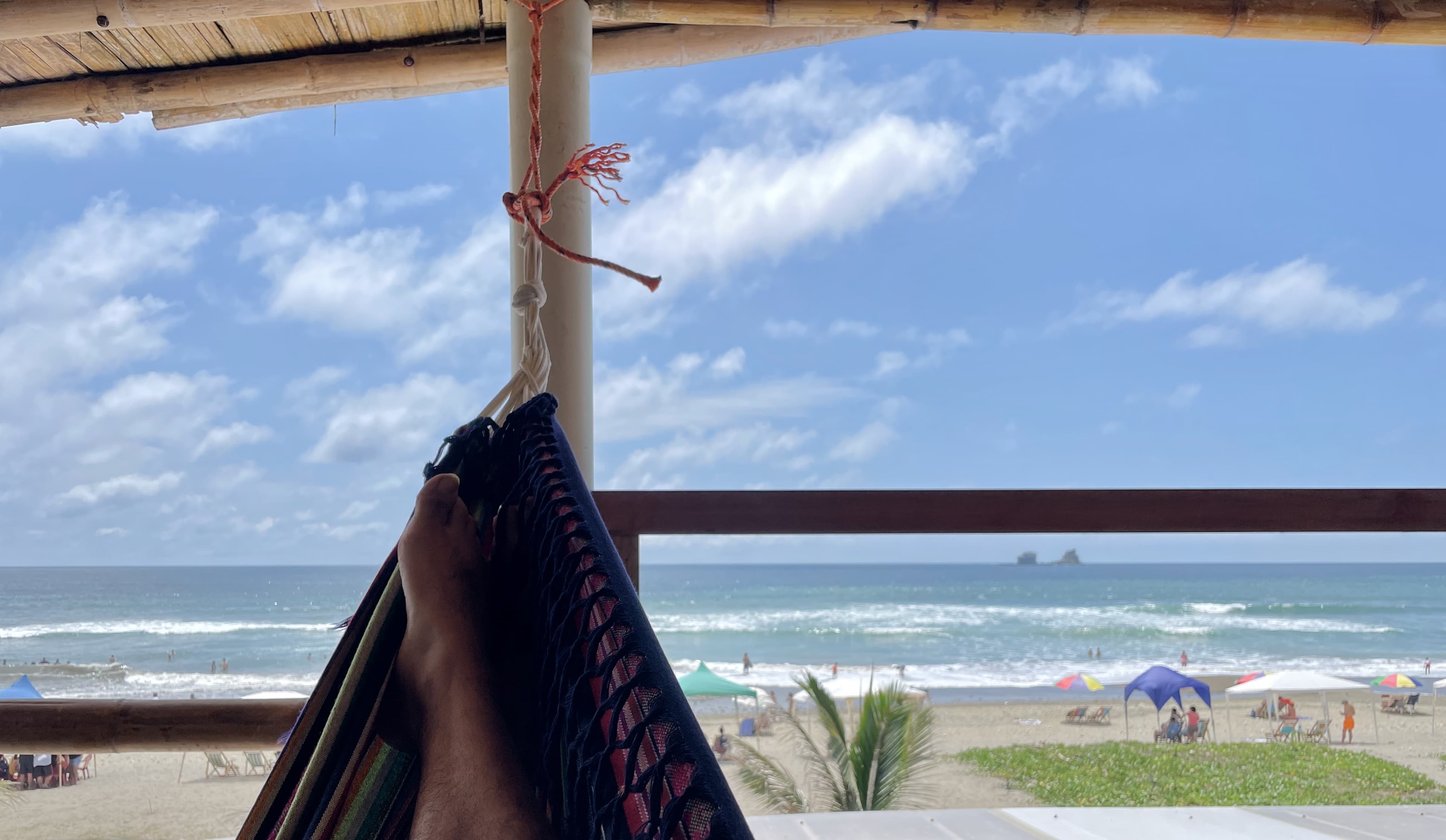
I'm lying in a multicolored hammock on the third floor of my hostel in Ayampe, Ecuador. I push off the floor with my foot to keep the hammock swinging, turning my body into a pendulum. The swing lulls me into mental serenity. The wind licks moisture off my skin—a respite from the tropical humidity.
The tide's coming in, so surfers stride into the ocean one by one, searching for moments of blissful focus. A lanky teenage girl catches her third wave of the day, celebrating with arms aloft as she rides it all the way to shore, bouncing with a youthful spring.
I feel suspended in time and space, lifted by the breeze, at peace with the wind and water.
The plastic trash can next to me feels the same way. Its lid perfectly catches eddies of wind, spinning continuously, emitting a rhythmic musical beat. I feel understood.
When I'm free from responsibility, I feel called to revisit the people who I've drifted away from. Reconnecting, you're bound to learn something about who you are now in relation to who you used to be. And when you visit an old friend, you provide the same perspective for them, too.
As you sit together, reminiscences emerge. You're struck by how much you've changed, and sometimes by how much you haven't. You're struck by shared memories that have stuck with both of you, and by some memories that meant a lot to one of you but not the other.
Searching for this feeling is what brought me here to Ayampe. Kolin is my old friend and former travel companion and roommate. The last time I felt compelled to publish my writings online was in 2015, chronicling the journey we went on through New Zealand. We lived together in SF for two years afterwards, before I moved to New York and he went on his own path.
In 2019, Kolin quit his tech job in pursuit of the life that called to him: deepening his practices of surfing, yoga, and meditation, and imparting these practices to others. After a few itinerant years that brought him to Sri Lanka, Morocco, and elsewhere, he found his way here to Ecuador last year and decided to put down roots.
The years spent on his chosen path have changed Kolin. His hair is lengthened and sun-bleached; his muscles primed from daily surfing; his attitude softened but focused through daily meditation. But he's still the same in many ways: he's retained many of his fundamental interests; he's still highly competent and outcome-oriented; and he's maintained a confidence that people find, in turns, vexing and endearing. I'm really glad I finally got the chance to catch up with him.
I don't know if I had a clear idea of what I was seeking when I came here. With the benefit of hindsight, I can now crystallize the questions that were lurking in my mind: What led Kolin to choose the life path he's on? How's it going for him? And what can I learn from that?
Ayampe
Ayampe is a tiny 400-person village on the Ecuadorian coast. Situated between the larger towns of Montañita (touristy, surf-centric) and Puerto Lopez (fishing town with amazing ceviche), Ayampe sneaks by—a little secret tucked into the coastline.
As far as I could tell, the village seems to be about 50/50 expats and locals. The expats are drawn to Ayampe's languorous pace of life and emphasis on surfing and yoga. The locals live alongside expats symbiotically, running hostels, shops, and restaurants catering to visitors.
Life here revolves around the ocean. Expats and locals alike seem to have a deep and rhythmic relationship with the sea, heading out once or twice a day to enjoy the sunshine and catch some waves. Watching the sunset over the west-facing coast is a revered daily ritual for everyone in town, and the pace of everything seems to slow down during that hour.
Two craggy rocks adorn the horizon, granting your eye a visual anchor as you gaze out at the setting sun. Known simply as "The Islands" by folks in town, the distinctive shape of these rocks serves as the town's unofficial symbol.
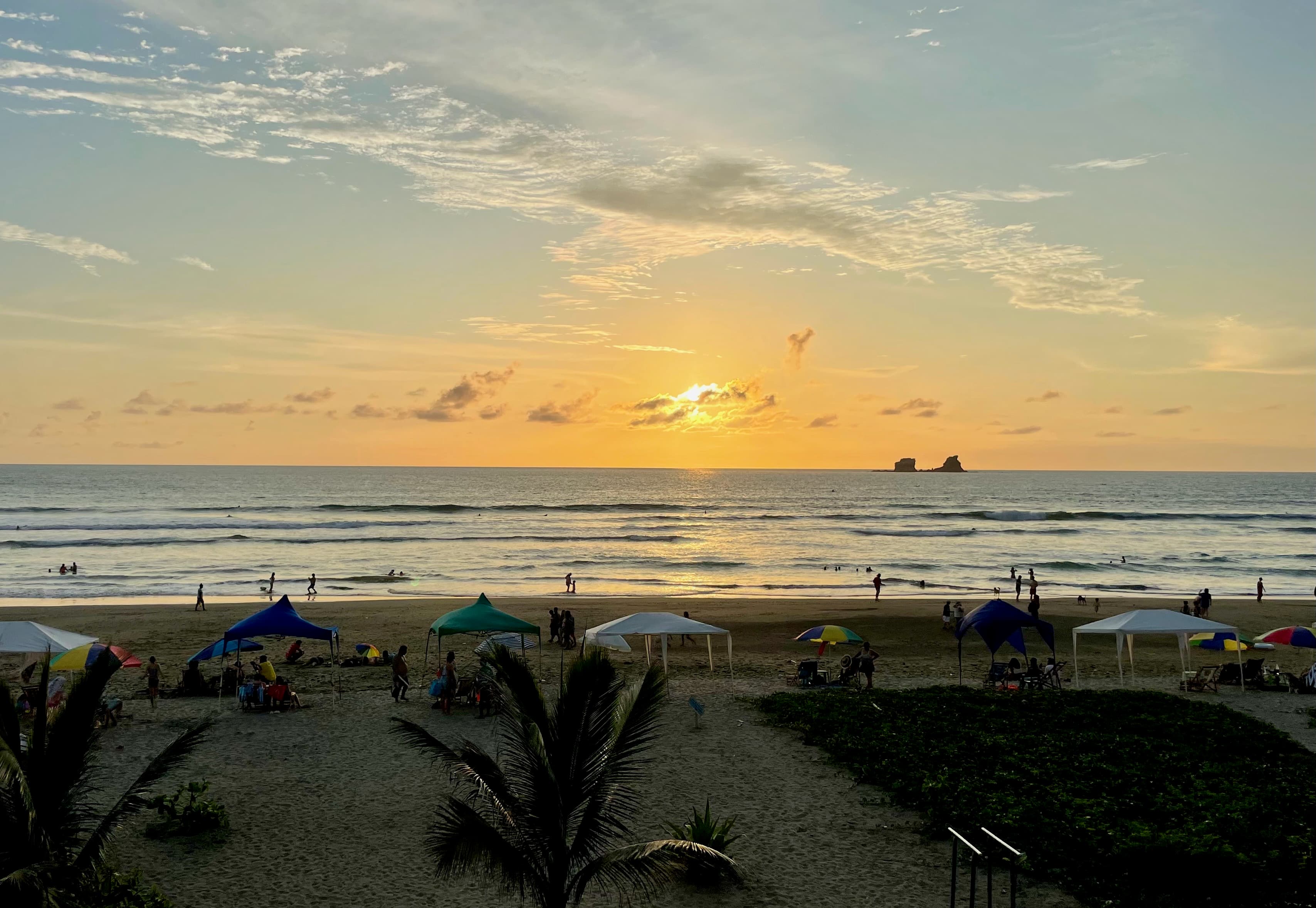
Buildings in the village are built from cinderblock washed in white plaster, finished with supplementary bamboo structures. Some are covered with corrugated steel that rusts quickly in the salty sea air.
The holiday of Carnival happened to be during the week I was in town. The beach was packed by Ayampe standards, covered with tents and thatched-roof structures assembled for the festivities. Locals welcomed the business, but complained about the noise and crowdedness. To my eyes, used to American beaches near cities like NYC and LA, the beaches looked practically empty.
Hostels overflowed with people lounging during the hot and humid days and spilling into the streets at night to wander the town or attend a small concert.
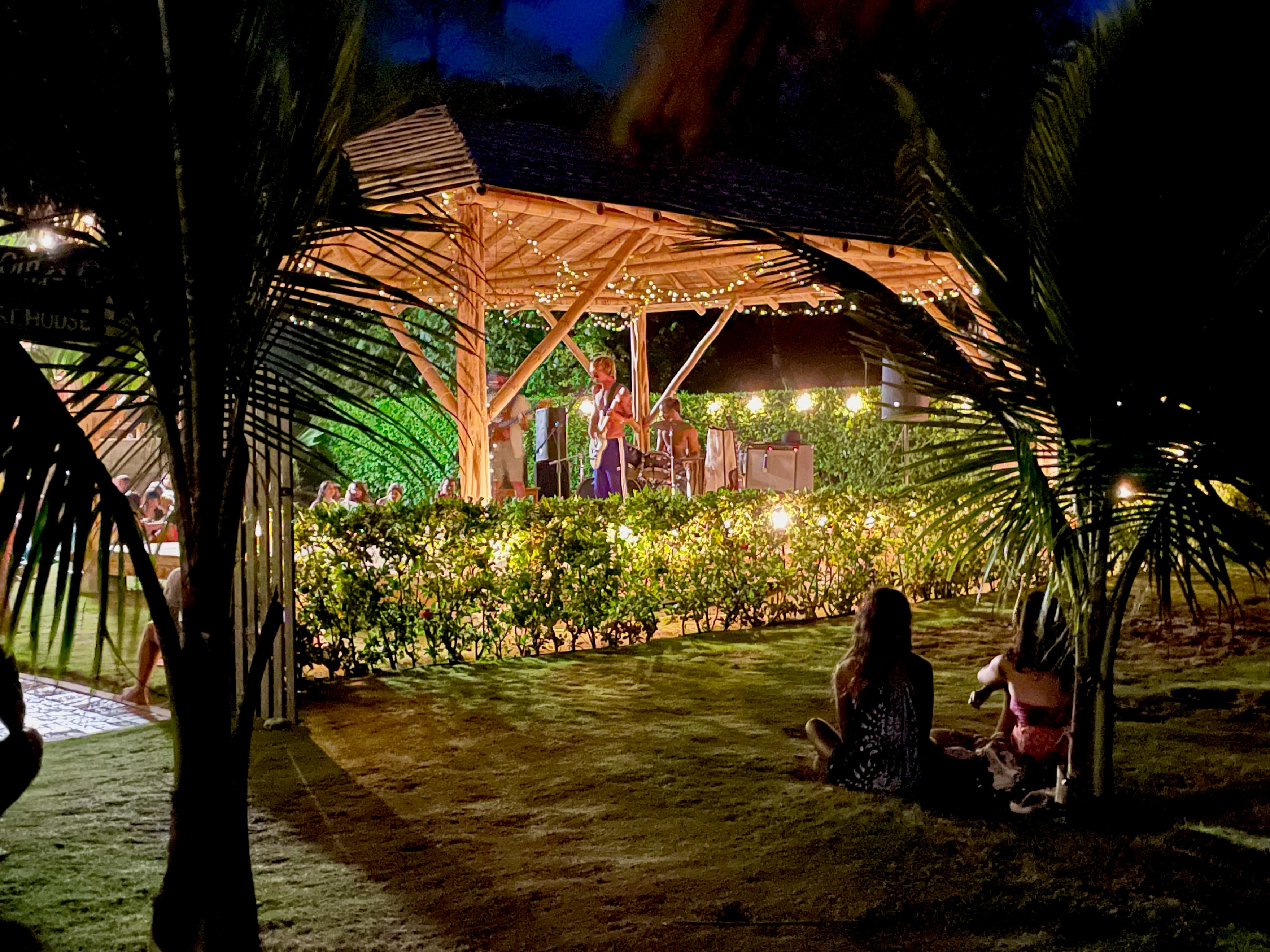
The village mindset
I don't know what technically makes a place a village or a town. What I do know is that Ayampe falls squarely into the "village" category.
The telltale sign was that during my six days there, I was already running into the same people over and over again. I met a friend of Kolin's at a street corner; ran into him the next day at a restaurant; then chatted with him the next day in the ocean, sitting on a surfboard waiting for waves. Serendipitous meetings like this happened all the time, and I got to know the life patterns of several people during my week there.
The result was a feeling of pervasive coziness that even a small town can't quite achieve. What causes this feeling to emerge? I suspect the secret is simply scale. Ayampe is just so small and walkable that serendipitous interactions are inevitable. The lives of expats and natives blend together, and before long, boundaries between people dissolve into a nebulous warmth, in a stark contrast to the rigidity of city life.
Children in town flit between neighbor's homes at a whim, quickly developing an independence that helicopter-parented children in American suburbs take decades to achieve. They wander and play with the other kids in town freely, and their wanderings intersect with all the animals that similarly roam around.
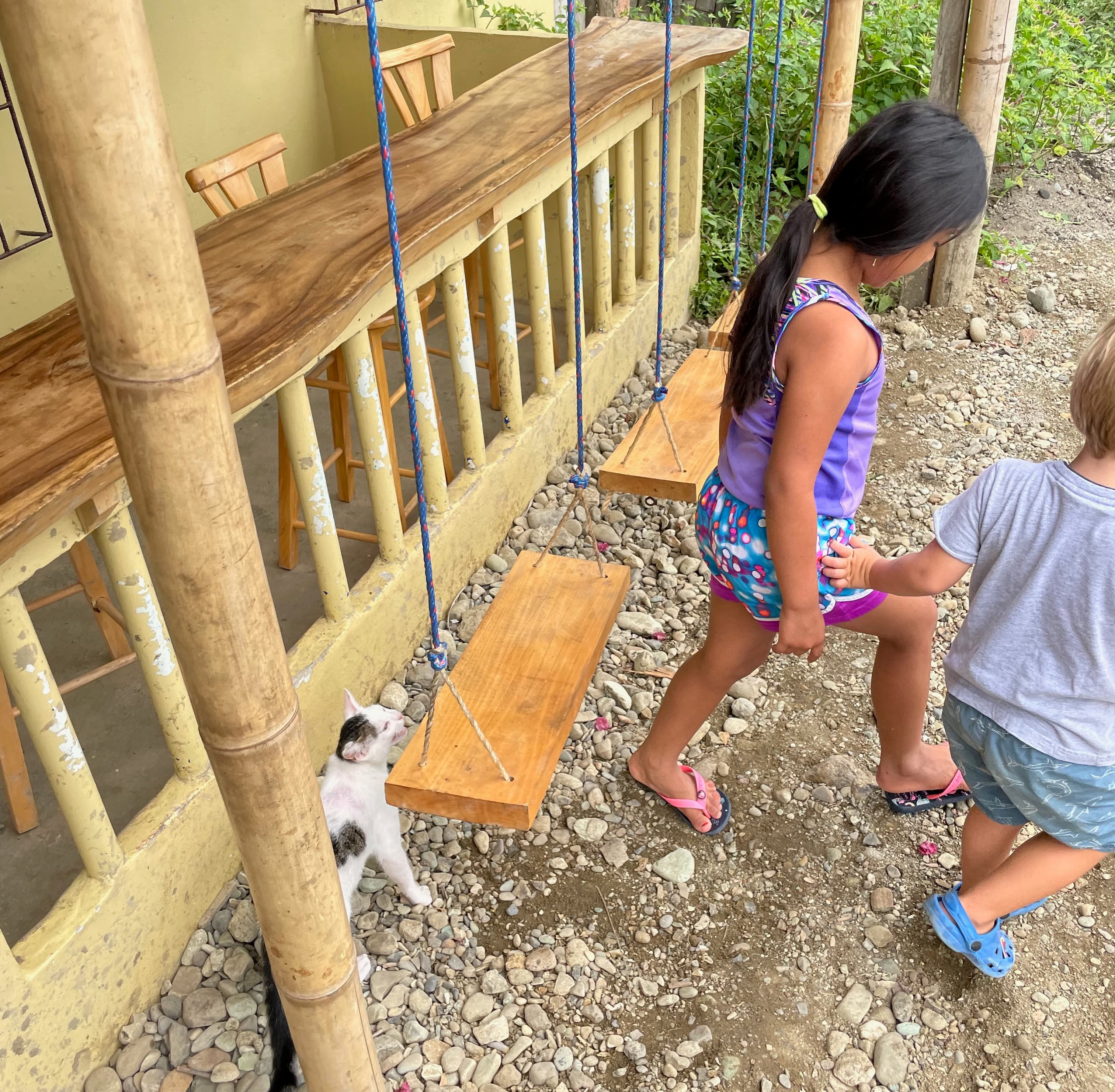
Entire essays could be written chronicling the dramas and complex interrelationships of Ayampe's cats and dogs. They're arguably even more free than the town's adults or children, floating between hostels and restaurants at will, providing a strange continuity between places as you traverse the town. It's unclear which animal belongs to which establishment or family; the pets feel collectively owned. The white, smushy-faced dog below seemed to belong to the hostel where I stayed, but followed us around town, popping up on the beach and in restaurants and cafés.
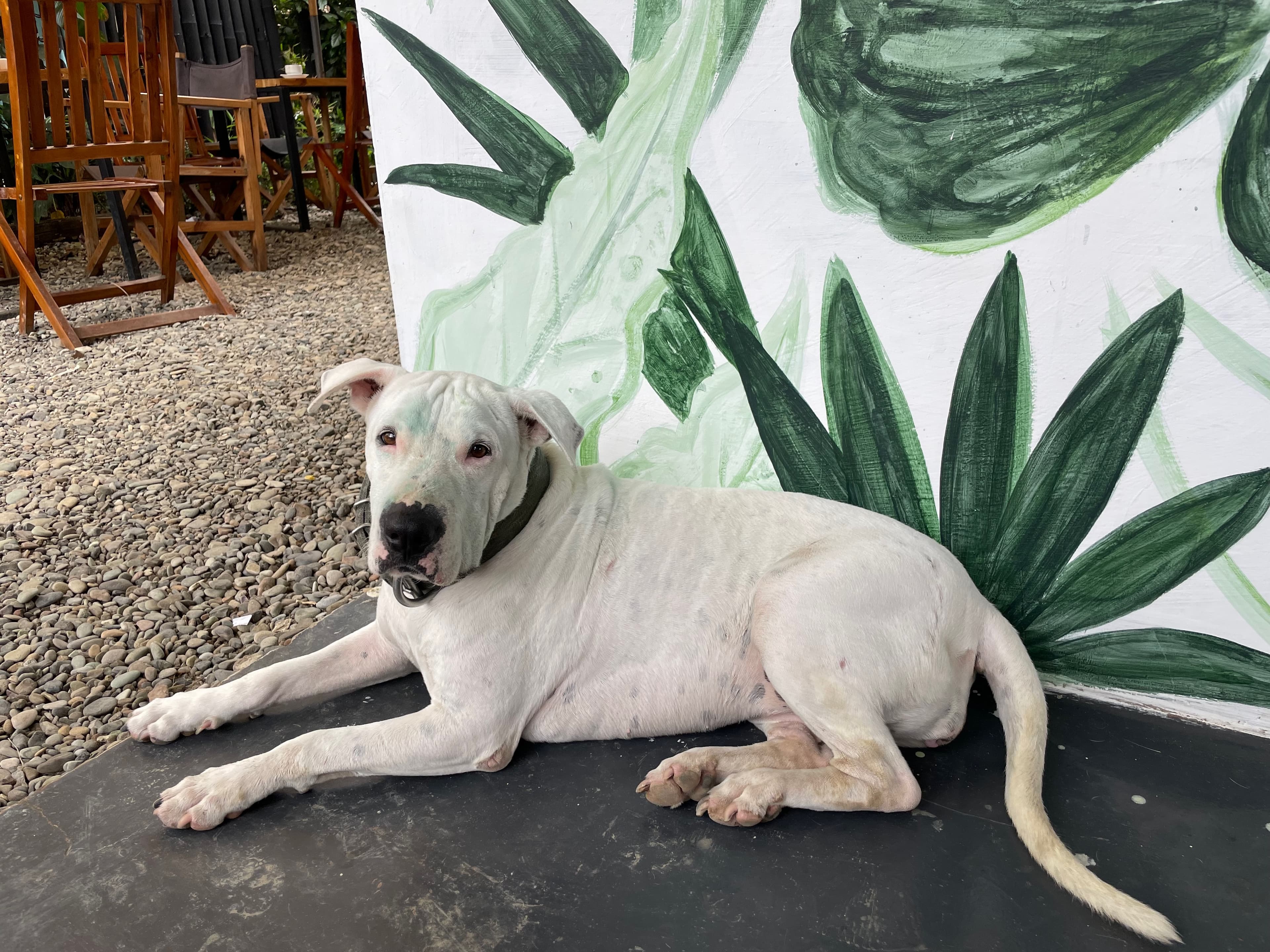
Kolin told me all about a dog named Grizzly. In his telling, she's the queen bee of the dogs in town, charging aggressively at any other dogs on sight. The other animals are all afraid of her, but around people, she's sweet as can be, begging for morsels of food with adorable, pleading eyes. During the meditation retreats that Kolin hosts, Grizzly follows guests all around town diligently. She's listed on his meditation center's website as the "Head of Security."
Ayampe's secret is that its characteristic cozy feeling isn't a happy accident—it's fully intentional.
Life, with limits
One of the first things you might notice about Ayampe is that all its roads are totally unpaved. Cars and bikes drive around on packed dirt streets, which can become inconveniently wet and waterlogged when it rains.
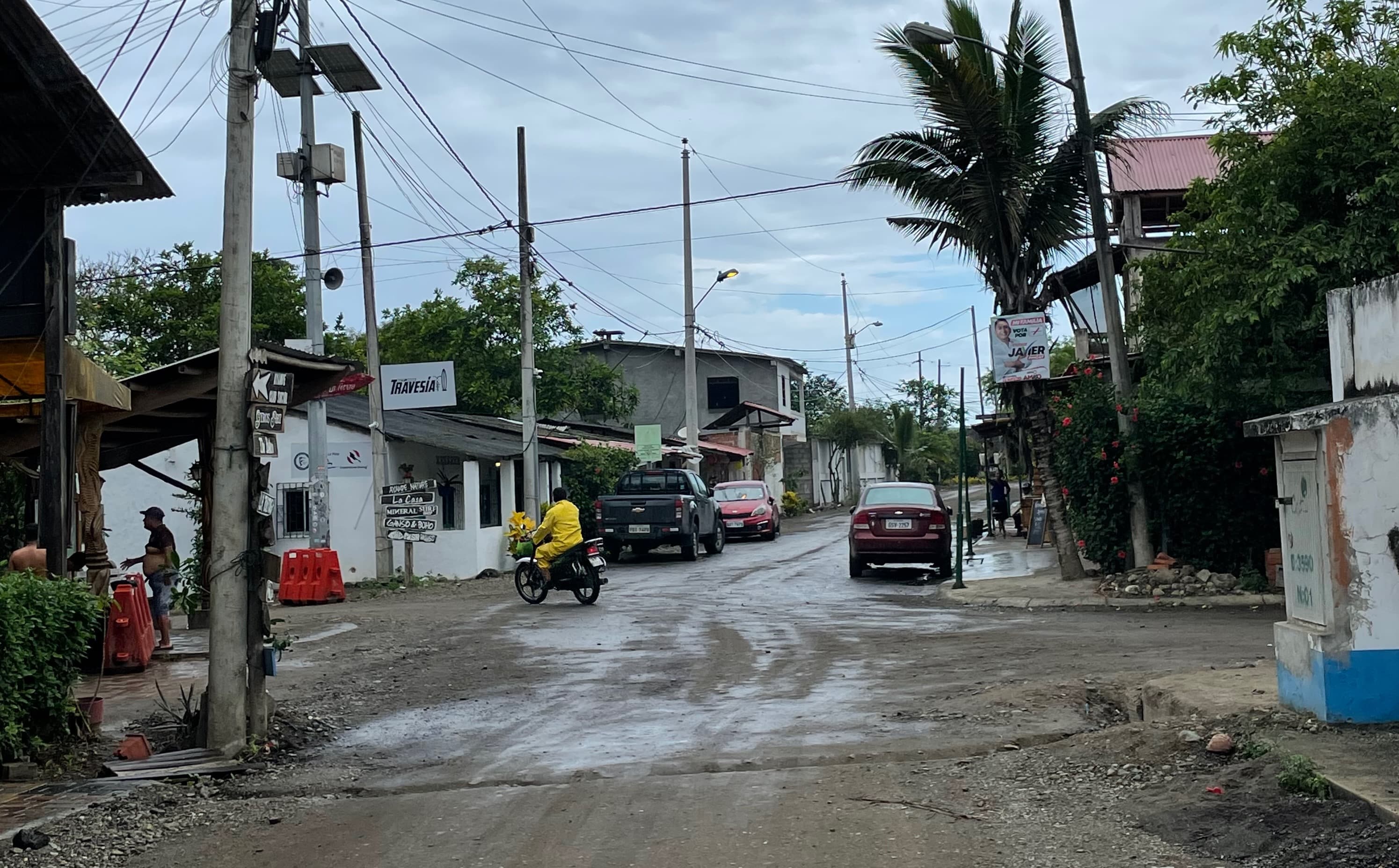
Also, the tap water in Ayampe isn't safe to drink. This means that everyone living in town, expats and locals alike, buys jugs of water from trucks that occasionally pass by. I didn't have a way to dispense water from one of these large jugs in my hostel, so I went to go buy bottles of water each morning from one of the few tiendas in town.
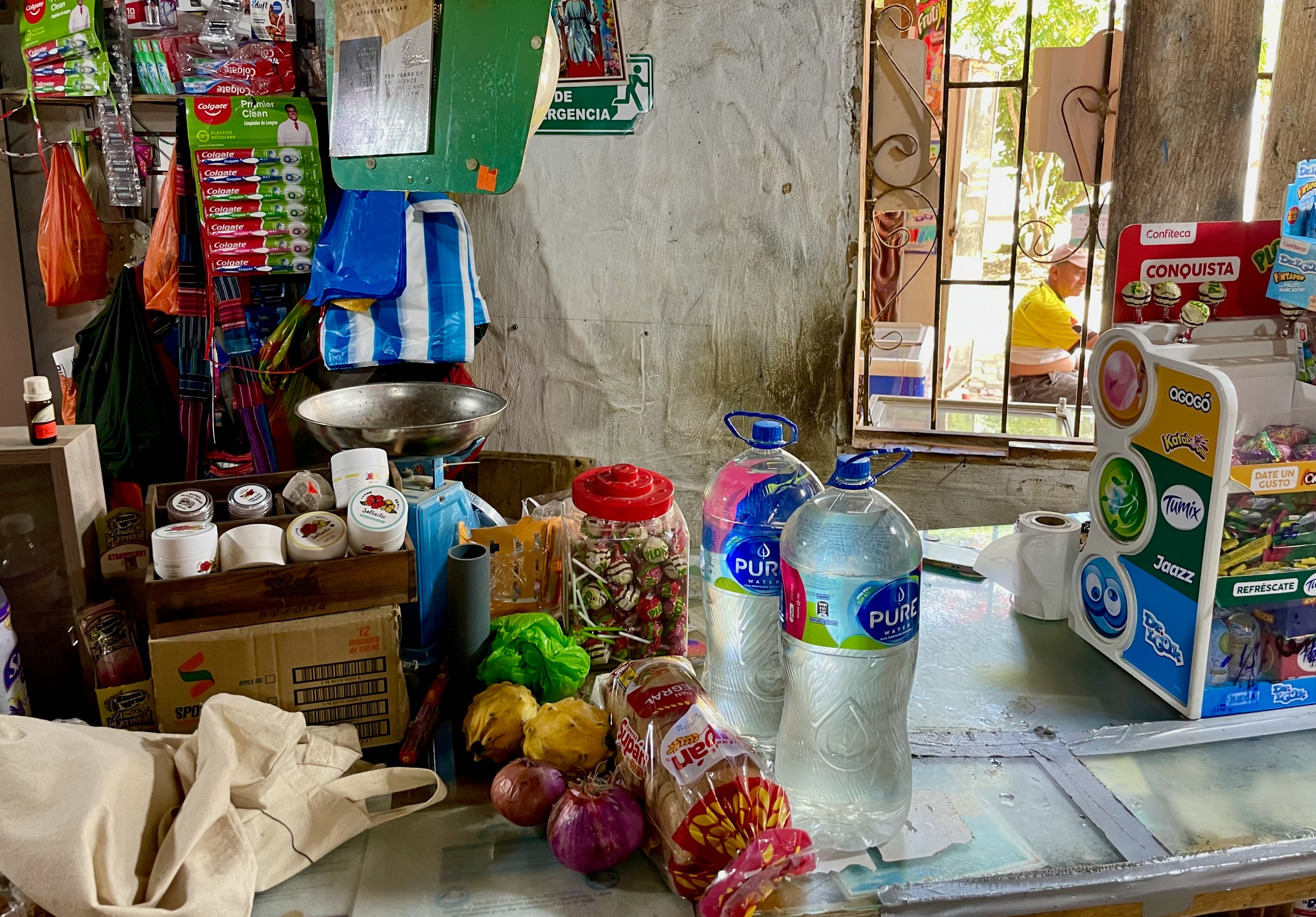
The tiendas provide basic goods, but there aren't any major grocery stores or supermarkets in town. Instead, farmers roll by every day with fresh produce on trucks, blasting audio announcing which goods are on sale that day. The produce is fresh and cheap, sold directly by those who grow it. But you have to seek out the day's goods and work with what's available, or drive 30 minutes to the next town to grab a broader range of groceries.
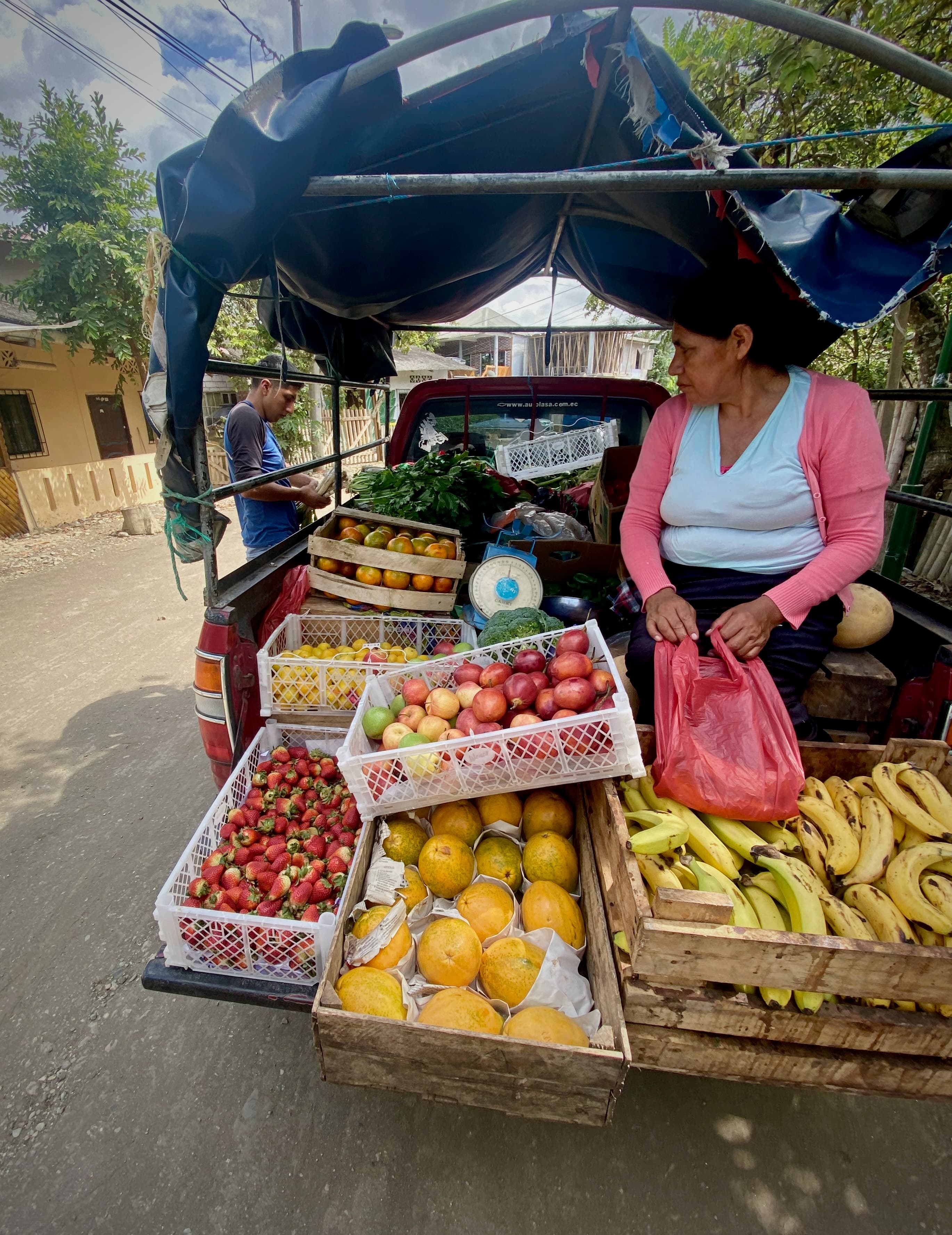
There's something much more significant you might notice later, to your misfortune as a tourist: almost everything in Ayampe is cash-only, and there are no ATMs in town.
Kolin told me that the unpaved roads and lack of ATMs are intentional choices made by Ayampe's comuna, or local government. They want to keep the place small to prevent the excessive development and tourism that inevitably ruins the character of villages like this.
It's hard to overstate the impact that the lack of ATMs had upon my experience. Kolin told me I'd need cash before I arrived, so I stopped to grab enough cash for the entire week. I estimated how much I'd be spending each day, arrived in town, and promptly stuffed all my cash into a pillowcase, afraid of having it get stolen. Whenever I went out for the day, I only brought the cash I needed for whatever I anticipated buying that day, not wanting to bring too much cash around.
My paranoia about petty theft proved unnecessary. But the result of only carrying around the cash I needed taught me an unexpected lesson: the modern, urban conveniences of ATMs on every corner and tap-to-pay at every shop come with a cost.
Your tap-enabled credit card is a portal into another dimension—a conduit for the reservoir of financial reserves sitting abstractly in a bank somewhere. When you mindlessly tap your credit card to transact, you frictionlessly siphon off that reservoir in exchange for a good or service. That convenience is nice, but the downside is that you're discouraged from ever thinking about how much you actually intend to consume when you step out the door.
In Ayampe, I sometimes ended up not having enough money in my pocket to buy something I wanted. Frankly, this is an odd thing to realize for someone who's had a high-paying tech job for the past decade. There are certainly things I encounter in New York that I can't afford, but it's never the case that I can't afford a dessert at dinner. Mentally, I started thinking of Ayampe's financial system as "the opposite of tap-to-pay." For me, it felt refreshing.
All in all, thinking about how much I was consuming and why I was consuming it was a factor in every choice I made. I woke up and went looking for water for the day; I kept track of my expenses to make sure I'd have enough for each meal; I skipped buying things I wanted because I didn't have enough cash. I was constantly thinking about how to live a life within limits.
Back in New York City, a city bursting with ways to drain your bank account, I've maintained this mentality. For now, at least, being conscious about what I'm consuming and why has stuck with me.
I think I'm better off for it, and I think Ayampe is better off being a little inconvenient. Inconvenience forces intentionality: the people who live in the village really want to live there. The inconvenience creates a character that many places throw away on a whim for the sake of unbridled development.
At the peak of Carnival festivities in Ayampe, the power went out. Having so many people in town must have overloaded the electric grid, causing an outage. A spooky atmosphere descended upon the town for a bit. I wondered what would happen.
Ayampe's residents shrugged and carried on. Electronic speakers normally blasting music went silent, and restaurants put a candle on every table. The clink of silverware and murmur of conversation were the only sounds carrying through the nighttime air. I went over to Kolin's and we sat on the floor by candlelight, chatting and sharing the evening, savoring the change in our circumstances.
Embracing the mundane
Ultimately, what I loved the most about visiting Ayampe wasn't the natural beauty, interpersonal charm, or the unexpectedly delicious pain au chocolat prepared daily by an expat French baker in town.
I really just enjoyed dipping into the life of an old friend and seeing what he's gravitated towards over the years. Visiting an old friend, sitting with and understanding the choices he's made—the ups, downs, dreams, and disappointments—teaches you something about yourself and what you want.
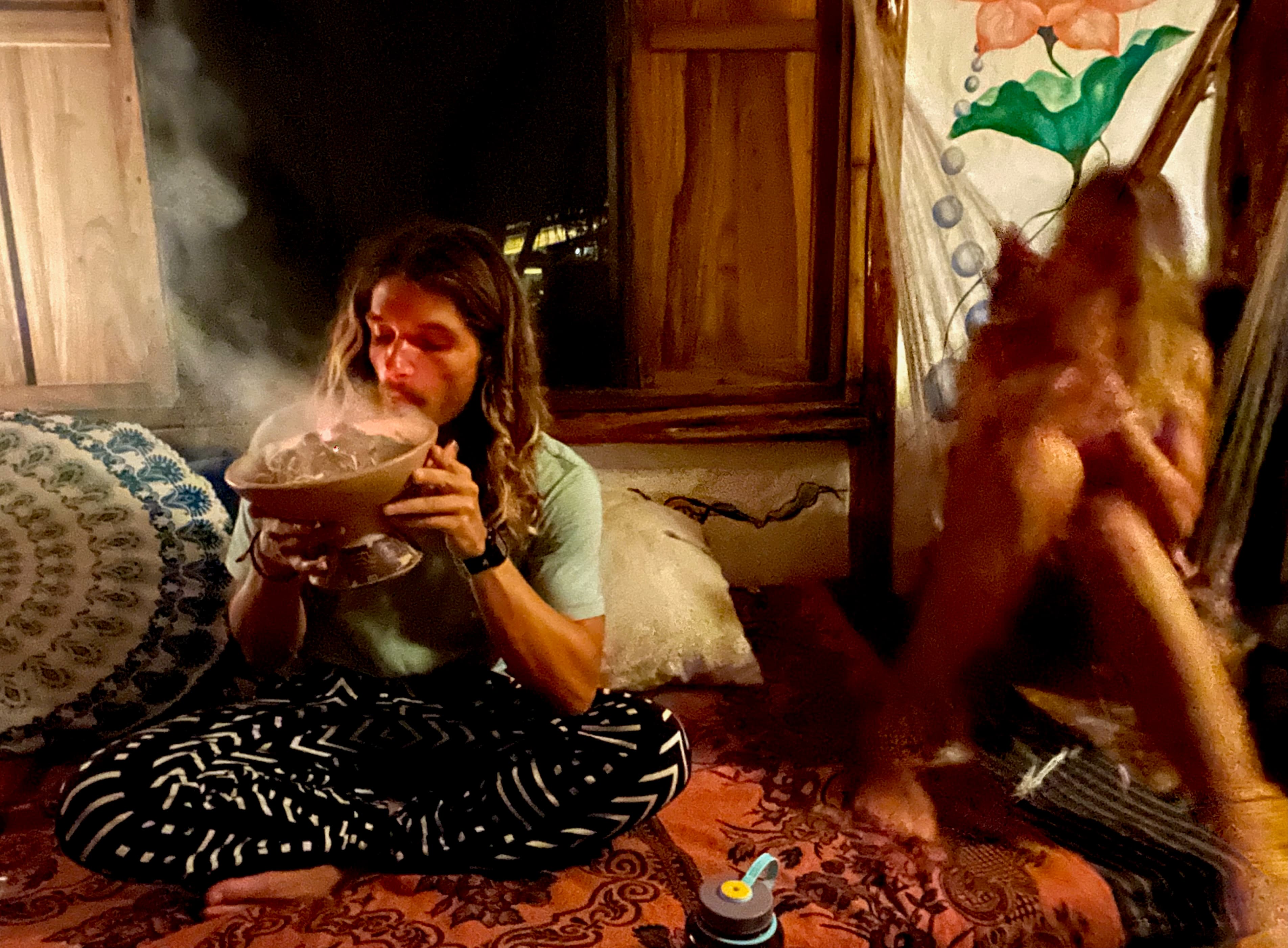
Spending time together, you see and share mundane things that might enrich your life in unexpected ways.
Kolin and his partner Anna have taken to cooking mostly vegetarian meals, which they shared with us generously: Moroccan tagines, Vietnamese spring rolls, and papaya bowls, a hollowed-out papaya stuffed with oatmeal and fresh fruit. You are what you eat. What better way is there to get a sense of someone's life than sharing the things that sustain you, literally constitute your body and mind? I just made Kolin's recipe for patacones (plantain fritters) earlier today.

Seeing the way Kolin interacted with others in Ayampe—the smallness of the place—solidified my conviction that I want to end up in a place where I can run into people I know on the street or the supermarket, in a way that feels far too infrequent in a city like New York. The way children grow up in a village like this, rooted in community, is delightful to witness.
I've long felt that the point of travel is this very experience: the feeling of your head and heart expanding as you imagine a different way of life. Yes, you can get this by going abroad and experiencing an alien culture or geography, but the trips that have stuck with me the most have been those in which I've visited a close friend leading a different life from mine. I've felt this way when the destination I visited was Ayampe or Berlin, but also when it was just Los Angeles or Louisville, Kentucky.
Looking back—way back—it's entirely unsurprising that Kolin has ended up in Ayampe, putting down roots in a small community and living in harmony with the jungle and ocean.
Back in 2015, Kolin gave me a copy of a book he loved called Ishmael. In it, a human narrator speaks at length with a gorilla named Ishmael, who opens the narrator's mind to the myths that make up modern society: among others, that humans are the pinnacle of evolution, and that the world was made for humans to conquer. In the book, Takers are "civilized" people who ascribe to these beliefs, and Leavers are the "primitive" people who live in traditional ways.
I think that even back then, the seeds of Kolin's eventual aspiration had been planted: to investigate what it might mean to live like a Leaver in the modern day, and to show others the way into that life.
Kolin and Anna are about to fulfill a long-standing dream: constructing a center where they can host in-person retreats to help their students deepen practices of mindfulness.
If you're interested, you can check out their website here.
Below is the view by the construction site. When we stepped through the skeleton of the building-to-be, I imagined the experiences students will have in the yoga shala, ensconced between the jungle on one side and an open view of the ocean on the other. I'm sure it'll be a place of profound change for many to come.
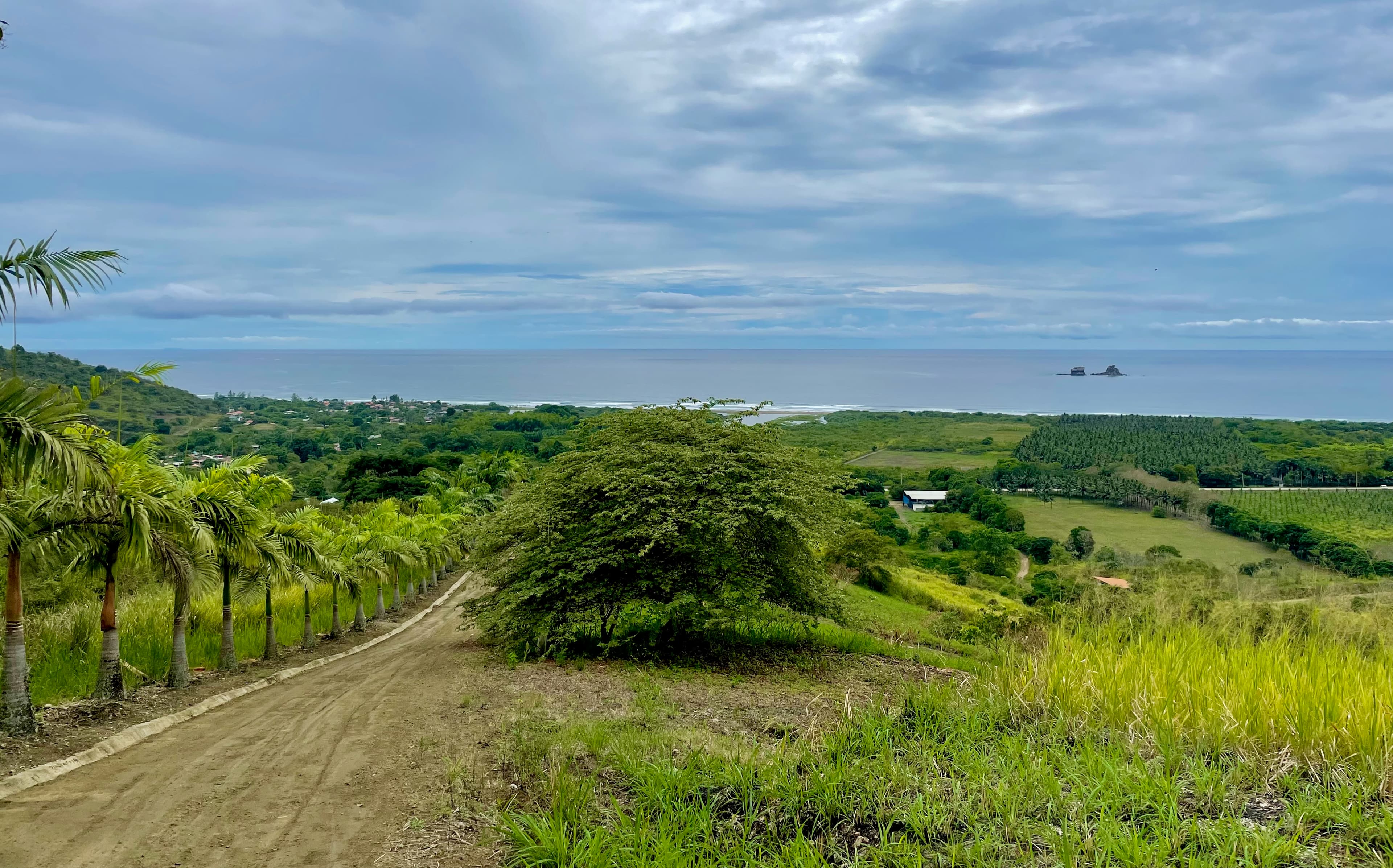
Who's an old friend you haven't seen in a while? What might happen if you dropped by and saw, firsthand, what they're up to?
I'm currently in New York, resting and reconnecting before my next stop: Japan. Before I depart, I hope to write up my next post about the Galápagos Islands. Stay tuned for sharks, dolphins, and much more.
Talk soon,
Vipul
